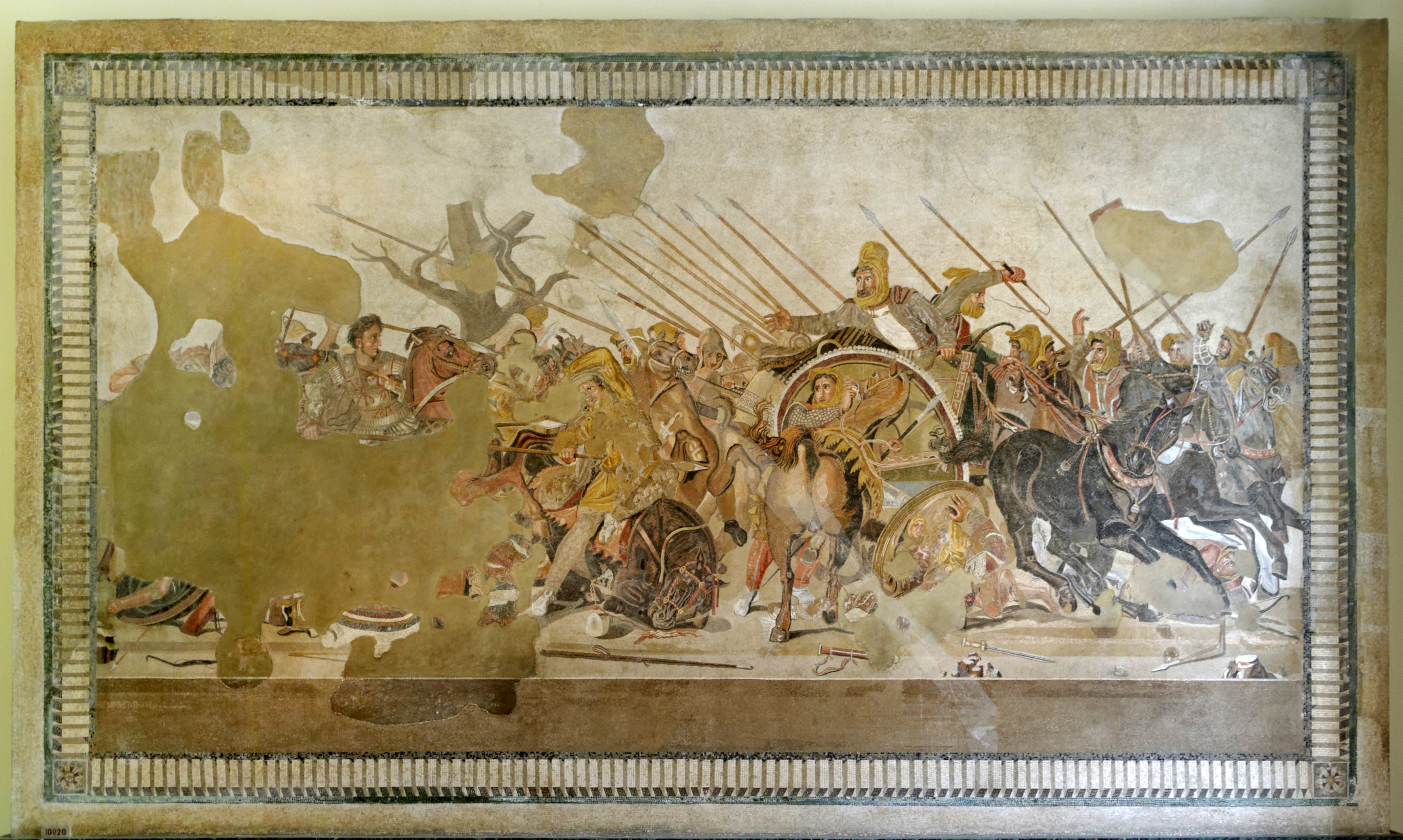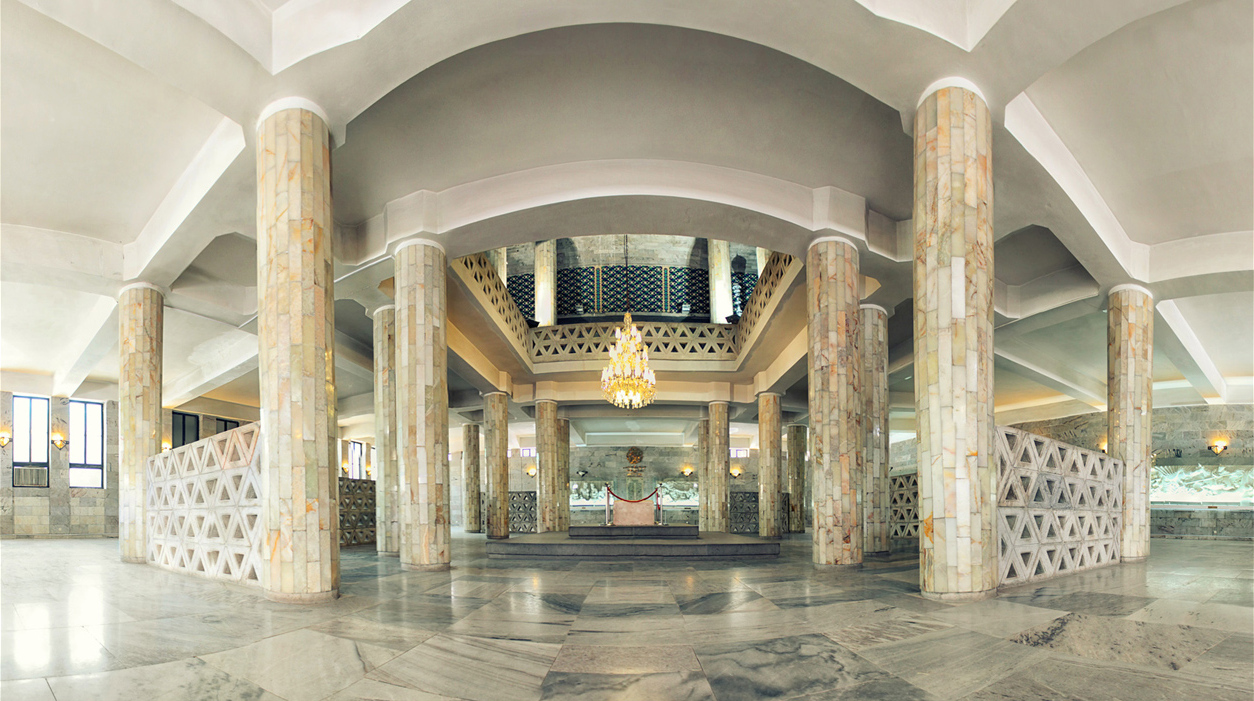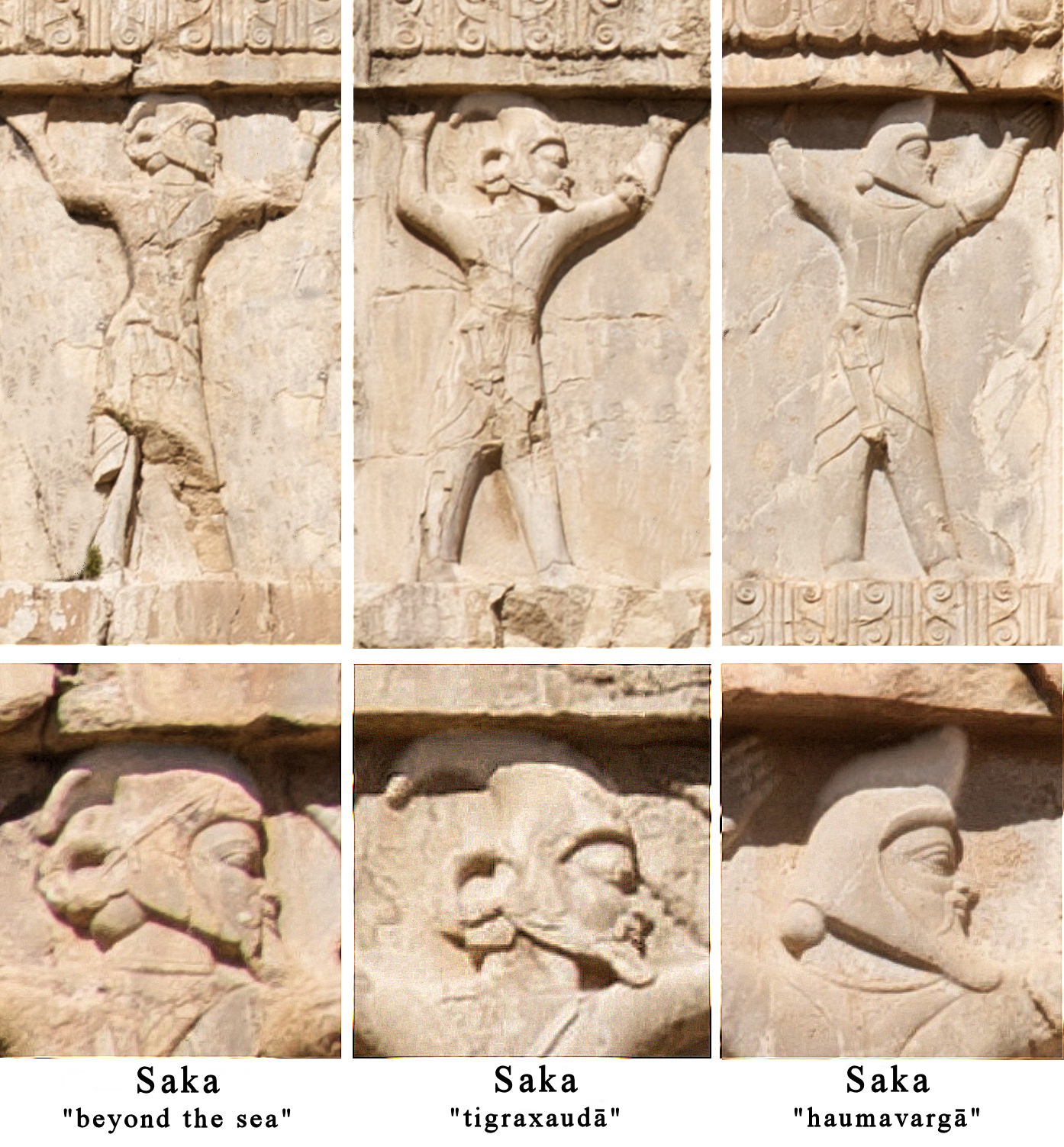|
Bessus
Bessus or Bessos (; ), also known by his throne name Artaxerxes V ( ; ; died summer 329 BC), was a Persian satrap of the eastern Achaemenid satrapy of Bactria, as well as the self-proclaimed King of Kings of the Achaemenid Empire from 330 to 329 BC. A member of the ruling Achaemenid dynasty, Bessus came to power shortly after killing the legitimate Achaemenid ruler Darius III (), and subsequently attempted to hold the eastern part of the empire against the Macedonian king Alexander the Great (). His realm quickly started to fall apart, including Bactria, which was the main center. Fleeing into Sogdia, he was arrested by his own officers, who handed him over to Alexander, who had him executed at Ecbatana. Bessus appears in the 11th-century Persian epic ''Shahnameh'' under the name of Janusipar/Janushyar. Name "Bessus" (Βήσσος) is the Greek transliteration of the Old Persian name ''*Bayaçā'' ("protecting from fear"). ' is the Latin form of the Greek ''Artaxérxes ... [...More Info...] [...Related Items...] OR: [Wikipedia] [Google] [Baidu] |
Darius III
Darius III ( ; ; – 330 BC) was the thirteenth and last Achaemenid King of Kings of Persia, reigning from 336 BC to his death in 330 BC. Contrary to his predecessor Artaxerxes IV Arses, Darius was a distant member of the Achaemenid dynasty. During his early career, he was reportedly an obscure figure among his peers and first rose to prominence during the Cadusian expedition of Artaxerxes III in the 350s BC. As a reward for his bravery, he was given the Satrapy of Armenia. Around 340 BC, he was placed in charge of the royal "postal service," a high-ranking position. In 338 BC, Artaxerxes III met an abrupt end after being poisoned by the court eunuch and chiliarch (''hazahrapatish'') Bagoas, who installed Artaxerxes' youngest son Arses on the throne. He only reigned for a few years, until Bagoas had him poisoned as well. Darius was subsequently installed on the throne and soon forced Bagoas to drink his poison after discovering that the eunuch had planned to poison him as w ... [...More Info...] [...Related Items...] OR: [Wikipedia] [Google] [Baidu] |
Alexander The Great
Alexander III of Macedon (; 20/21 July 356 BC – 10/11 June 323 BC), most commonly known as Alexander the Great, was a king of the Ancient Greece, ancient Greek kingdom of Macedonia (ancient kingdom), Macedon. He succeeded his father Philip II of Macedon, Philip II to the throne in 336 BC at the age of 20 and spent most of his ruling years conducting Wars of Alexander the Great, a lengthy military campaign throughout West Asia, Western Asia, Central Asia, parts of South Asia, and ancient Egypt, Egypt. By the age of 30, he had created one of the List of largest empires, largest empires in history, stretching from History of Greece, Greece to northwestern History of India, India. He was undefeated in battle and is widely considered to be one of history's greatest and most successful military commanders. Until the age of 16, Alexander was tutored by Aristotle. In 335 BC, shortly after his assumption of kingship over Macedon, he Alexander's Balkan campaign, campaigned in the Bal ... [...More Info...] [...Related Items...] OR: [Wikipedia] [Google] [Baidu] |
Achaemenid Empire
The Achaemenid Empire or Achaemenian Empire, also known as the Persian Empire or First Persian Empire (; , , ), was an Iranian peoples, Iranian empire founded by Cyrus the Great of the Achaemenid dynasty in 550 BC. Based in modern-day Iran, it was the List of largest empires#Timeline of largest empires to date, largest empire by that point in history, spanning a total of . The empire spanned from the Balkans and ancient Egypt, Egypt in the west, most of West Asia, the majority of Central Asia to the northeast, and the Indus Basin, Indus Valley of South Asia to the southeast. Around the 7th century BC, the region of Persis in the southwestern portion of the Iranian plateau was settled by the Persians. From Persis, Cyrus rose and defeated the Medes, Median Empire as well as Lydia and the Neo-Babylonian Empire, marking the establishment of a new imperial polity under the Achaemenid dynasty. In the modern era, the Achaemenid Empire has been recognised for its imposition of a succ ... [...More Info...] [...Related Items...] OR: [Wikipedia] [Google] [Baidu] |
Sogdia
Sogdia () or Sogdiana was an ancient Iranian peoples, Iranian civilization between the Amu Darya and the Syr Darya, and in present-day Uzbekistan, Turkmenistan, Tajikistan, Kazakhstan, and Kyrgyzstan. Sogdiana was also a province of the Achaemenid Empire, and listed on the Behistun Inscription of Darius the Great. Sogdiana was first conquered by Cyrus the Great, the founder of the Achaemenid Empire, and then was annexed by the Macedonian ruler Alexander the Great in 328 BC. It would continue to change hands under the Seleucid Empire, the Greco-Bactrian Kingdom, the Kushan Empire, the Sasanian Empire, the Hephthalite Empire, the Western Turkic Khaganate, and the Muslim conquest of Transoxiana. The Sogdian city-states, although never politically united, were centered on the city of Samarkand. Sogdian language, Sogdian, an Eastern Iranian language, is no longer spoken. However, a descendant of one of its dialects, Yaghnobi language, Yaghnobi, is still spoken by the Yaghnobis of Taji ... [...More Info...] [...Related Items...] OR: [Wikipedia] [Google] [Baidu] |
Macedonian Empire
Macedonia ( ; , ), also called Macedon ( ), was an ancient kingdom on the periphery of Archaic and Classical Greece, which later became the dominant state of Hellenistic Greece. The kingdom was founded and initially ruled by the royal Argead dynasty, which was followed by the Antipatrid and Antigonid dynasties. Home to the ancient Macedonians, the earliest kingdom was centered on the northeastern part of the Greek peninsula,. and bordered by Epirus to the southwest, Illyria to the northwest, Paeonia to the north, Thrace to the east and Thessaly to the south. Before the 4th century BC, Macedonia was a small kingdom outside of the area dominated by the great city-states of Athens, Sparta and Thebes, and briefly subordinate to Achaemenid Persia. During the reign of the Argead king PhilipII (359–336 BC), Macedonia subdued mainland Greece and the Thracian Odrysian kingdom through conquest and diplomacy. With a reformed army containing phalanxes wielding the '' ... [...More Info...] [...Related Items...] OR: [Wikipedia] [Google] [Baidu] |
Achaemenid Dynasty
The Achaemenid dynasty ( ; ; ; ) was a royal house that ruled the Achaemenid Empire, which eventually stretched from Egypt and Thrace in the west to Central Asia and the Indus Valley in the east. Origins The history of the Achaemenid dynasty is mainly known through Greek historians, such as Herodotus, Thucydides, and Xenophon. Additional sources include the Hebrew Bible, other Jewish religious texts, and native Iranian sources. According to Herodotus, the Achaemenids were a clan of the Pasargadae tribe:These were the leading tribes, on which all the other Persians were dependent, namely the Pasargadae, Maraphians, and Maspioi. Of these, the Pasargadae are the most noble and include the family of Achaemenids, the Kings of Persia, who are descendants of Perseus.Darius the Great, in an effort to establish his legitimacy, later traced his genealogy to Achaemenes, Persian "". His son was given as Teispes, and from him came in turn Ariaramnes, Arsames, and Hystaspes. How ... [...More Info...] [...Related Items...] OR: [Wikipedia] [Google] [Baidu] |
Macedonia (ancient Kingdom)
Macedonia ( ; , ), also called Macedon ( ), was an Classical antiquity, ancient monarchy, kingdom on the periphery of Archaic Greece, Archaic and Classical Greece, which later became the dominant state of Hellenistic Greece. The History of Macedonia (ancient kingdom), kingdom was founded and initially ruled by the royal Argead dynasty, which was followed by the Antipatrid dynasty, Antipatrid and Antigonid dynasty, Antigonid dynasties. Home to the ancient Macedonians, the earliest kingdom was centered on the northeastern part of the Greek peninsula,. and bordered by Epirus (ancient state), Epirus to the southwest, Illyria to the northwest, Paeonia (kingdom), Paeonia to the north, Thrace to the east and Ancient Thessaly, Thessaly to the south. Before the 4th century BC, Macedonia was a small kingdom outside of the area dominated by the great city-states of Classical Athens, Athens, Sparta and Classical Thebes, Thebes, and Achaemenid Macedonia, briefly subordinate to Achaemeni ... [...More Info...] [...Related Items...] OR: [Wikipedia] [Google] [Baidu] |
Bactria
Bactria (; Bactrian language, Bactrian: , ), or Bactriana, was an ancient Iranian peoples, Iranian civilization in Central Asia based in the area south of the Oxus River (modern Amu Darya) and north of the mountains of the Hindu Kush, an area within the north of modern Afghanistan, Tajikistan and Uzbekistan. Bactria was strategically located south of Sogdia and the western part of the Pamir Mountains. The extensive mountain ranges acted as protective "walls" on three sides, with the Pamir on the north and the Hindu Kush on south forming a junction with the Karakoram, Karakoram range towards the east. Called "beautiful Bactria, crowned with flags" by the Avesta, the region is considered, in the Zoroastrianism, Zoroastrian faith, to be one of the "Avestan geography, sixteen perfect Iranian lands" that the supreme deity, Ahura Mazda, had created. It was once a small and independent kingdom struggling to exist against nomadic Turya (Avesta), Turanians. One of the early centres of ... [...More Info...] [...Related Items...] OR: [Wikipedia] [Google] [Baidu] |
Ferdowsi
Abu'l-Qâsem Ferdowsi Tusi (also Firdawsi, ; 940 – 1019/1025) was a Persians, Persian poet and the author of ''Shahnameh'' ("Book of Kings"), which is one of the world's longest epic poetry, epic poems created by a single poet, and the greatest epic of Persian-speaking people, Persian-speaking countries. Ferdowsi is celebrated as one of the most influential figures of Persian literature and one of the greatest in the history of literature. Name Except for his ''kunya (Arabic), kunya'' ( – , meaning 'father of Qasem') and his Takhallus, pen name ( – ''Ferdowsī'', meaning 'Paradise, paradisic'), nothing is known with any certainty about his full name. According to Djalal Khaleghi-Motlagh, the information given by the 13th-century author Bundari about Ferdowsi's name should be taken as the most reliable. Bundari calls the poet al-Amir al-Hakim Abu'l-Qasem Mansur ibn al-Hasan al-Ferdowsi al-Tusi. From an early period on, he has been referred to by different additional na ... [...More Info...] [...Related Items...] OR: [Wikipedia] [Google] [Baidu] |
Middle Persian
Middle Persian, also known by its endonym Pārsīk or Pārsīg ( Inscriptional Pahlavi script: , Manichaean script: , Avestan script: ) in its later form, is a Western Middle Iranian language which became the literary language of the Sasanian Empire. For some time after the Sasanian collapse, Middle Persian continued to function as a prestige language. It descended from Old Persian, the language of the Achaemenid Empire and is the linguistic ancestor of Modern Persian, the official language of Iran (also known as Persia), Afghanistan ( Dari) and Tajikistan ( Tajik). Name "Middle Iranian" is the name given to the middle stage of development of the numerous Iranian languages and dialects. The middle stage of the Iranian languages begins around 450 BCE and ends around 650 CE. One of those Middle Iranian languages is Middle Persian, i.e. the middle stage of the language of the Persians, an Iranian people of Persia proper, which lies in the south-western Iran highlands on ... [...More Info...] [...Related Items...] OR: [Wikipedia] [Google] [Baidu] |
New Persian
New Persian (), also known as Modern Persian () is the current stage of the Persian language spoken since the 8th to 9th centuries until now in Greater Iran and surroundings. It is conventionally divided into three stages: Early New Persian (8th/9th centuries), Classical Persian (10th–18th centuries), and Contemporary Persian (19th century to present). Dari is a name given to the New Persian language since the 10th century, widely used in Arabic (see Istakhri, al-Maqdisi and ibn Hawqal) and Persian texts. Since 1964, Dari has been the official name in Afghanistan for the Persian spoken there. Classification New Persian is a member of the Western Iranian group of the Iranian languages, which make up a branch of the Indo-European languages in their Indo-Iranian subdivision. The Western Iranian languages themselves are divided into two subgroups: Southwestern Iranian languages, of which Persian is the most widely spoken, and Northwestern Iranian lan ... [...More Info...] [...Related Items...] OR: [Wikipedia] [Google] [Baidu] |
Saka
The Saka, Old Chinese, old , Pinyin, mod. , ), Shaka (Sanskrit (Brāhmī): , , ; Sanskrit (Devanāgarī): , ), or Sacae (Ancient Greek: ; Latin: were a group of nomadic Iranian peoples, Eastern Iranian peoples who lived in the Eurasian Steppe and the Tarim Basin from the 9th century BC to the 5th century AD. "Modern scholars have mostly used the name Saka to refer specifically to Iranians of the Eastern Steppe and Tarim Basin" "In modern scholarship the name 'Sakas' is reserved for the ancient tribes of northern and eastern Central Asia and Eastern Turkestan to distinguish them from the related Massagetae of the Aral region and the Scythians of the Pontic steppes. These tribes spoke Iranian languages, and their chief occupation was nomadic pastoralism." The Saka were closely related to the Scythians, and both groups formed part of the wider Scythian cultures. However, they are distinguished from the Scythians by their specific geographical and cultural traits. The Saka la ... [...More Info...] [...Related Items...] OR: [Wikipedia] [Google] [Baidu] |







